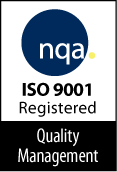Some sponsors require drug supply pooling for their larger program level drug studies. This allows them to consolidate supply lines and cut costs. What exactly is drug pooling and what does it mean for Interactive response technology (IRT) Drug pooling requires IRT drug management to be able to supply multiple studies from a central drug schedule simultaneously. To do this well, the drug management needs to be sophisticated enough to balance supply settings across multiple trials while applying them to a central supply source.When setting up an IRT for drug pooling, consider that there will be some kit types used that will not be used for every trial drawing on the pooled supply of drug. The system and study designs need to be intelligent enough to ignore kit types that are not used. Also consider that kits may be utilized by different countries with different import regulations. Some countries may allow supplies to be imported within 90 days of their expiry date while other countries may require supplies being imported to be a year or more from their expiry dates. To accommodate this, Do Not Ship, Do Not Count and Do Not Dispense settings need to be set at the study level and applied to a common batch associated with pooled supplies. Some sponsors may request a system that can control drug at the label group and batch level for use in shipments. In these types of systems, the batch or lot number would act similar to the label group setting by ensuring kits are selected only when the batch or lot is approved for certain countries( even if the kits have the label group in common for the country). Drug releases for pooled supplies are also more sophisticated as certain ranges of kits may be released sooner for one study than others. Therefore it is critical to ensure that the kits being released are only truly available for the study that the release is related to.To keep track of all of this information the IRT web reports need to be able to support studies that use drug pooling. The reports may need to be set up to look at drug supply at the study program level in order to track the central pool of supplies. IRT Study level reports will also be necessary to give detail on the kits and their disposition once they have been requested and are associated with sites and subjects. The program level reports would almost certainly need to be unblinded to keep track of the treatment types needed and available for the programs supported. Leveraging the reporting power of the IRT database in combination with data transfer to the drug depot would be vital tools in the success of the clinical supplies management team.Drug pooling offers a cost effective way to streamline supply chains in clinical trials through clinical trial technology. It should be a deciding factor in IRT system design when being applied at the program level. Insight is critical and when well designed web reports are in place, the benefits of this method of clinical supply management will be apparent in the clinical supply chain.

